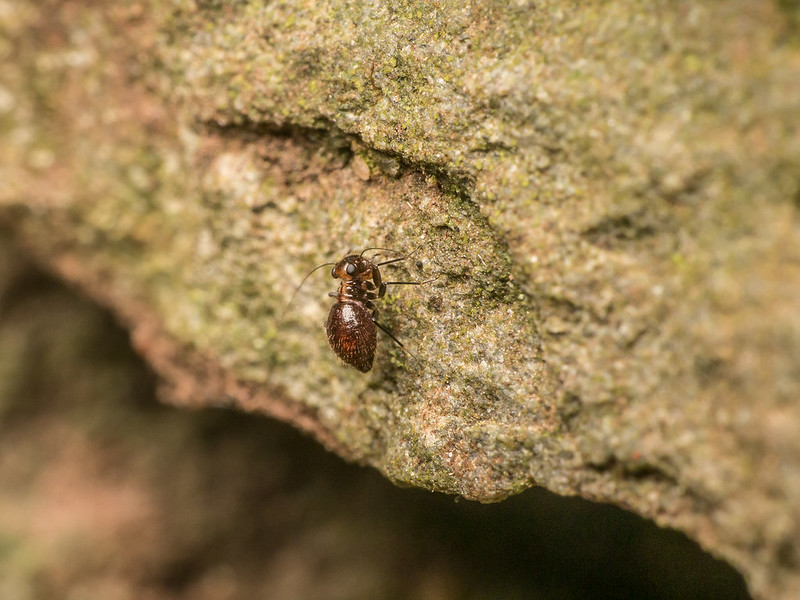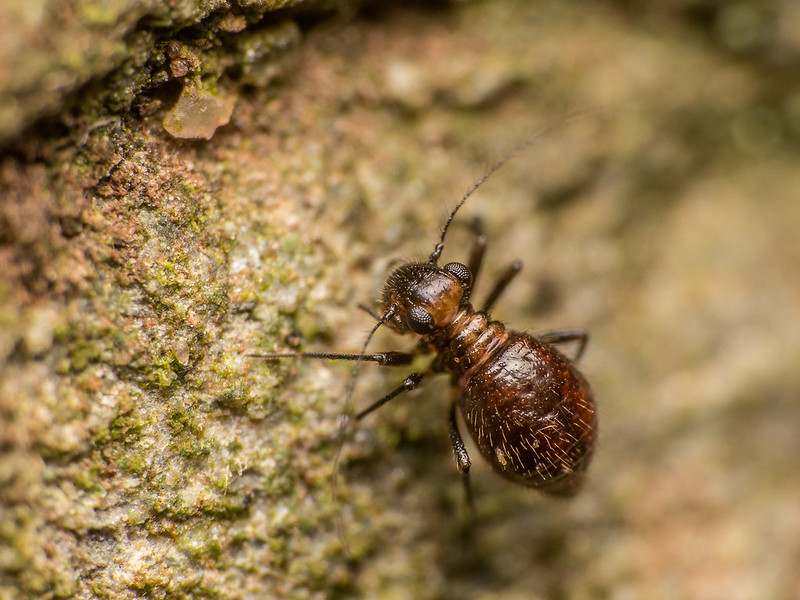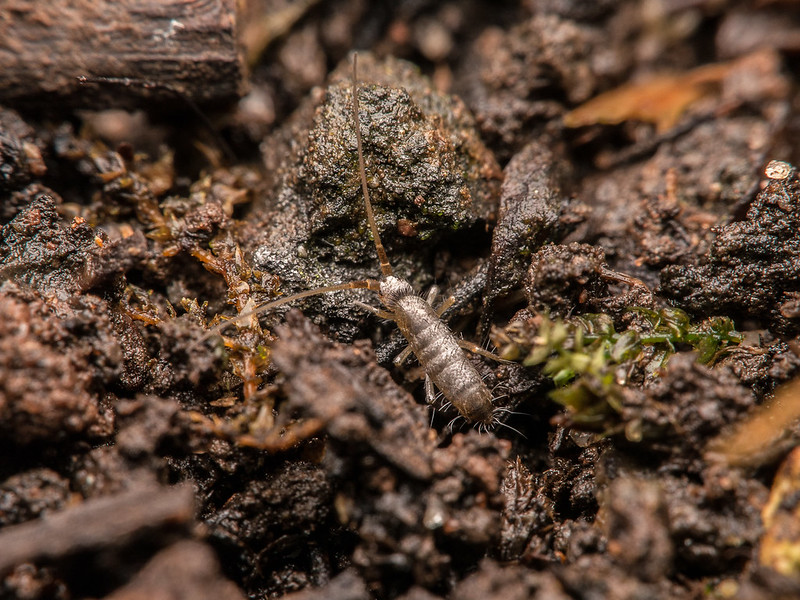All, thanks for your positive comments. I'm very interested in your comments about the lighting, as this is, I thought while capturing these images, my second level lighting arrangement -
the pie tin diffuser, the latest version of which uses 160 gram frosted plastic as the diffusion material. This uses a single source of light from a fixed position, being attached to a flash unit in the hot shoe, with the only positional adjustment being a slight rotation to left or right. I have only used the KX800 a few times as yet, but it gives much greater flexibility, in terms of balancing (and unbalancing) the light on the subject from the two sources, varying the directions and distances from which the illumination comes and illuminating backgrounds.
However, I've had a bit of a rethink on the subject of very small subjects, and the pie tin diffuser may become my favourite light source for these. It is written up in
this post in my journey thread.
As to autofocus, that is one of the advantages of not using a "proper" macro rig. With a suitable achromat on a suitable lens (see
here for an example of an achromat that is unsuitable, at least with my cameras), autofocusing works much the same as normal. Being contrast detect auto focusing (CDAF) on my cameras (including the 70D the way I use it), the autofocusing is not as fast as OVF phase detect focusing is (under suitable circumstances), so no BIF (birds or bees) with CDAF. However, it is pretty fast (fast enough for ambulating invertebrates a lot of the time) and it doesn't suffer from the hunting that I've experienced and I understand is quite common with autofocus at close quarters with macro lenses. And of course that is generally only down to 1:1 anyway with macro lenses.
Autofocus is almost always fine with the Raynox 150 on the FZ200, which gets down to about 1.5:1 in APS-C terms. It is usually ok with the Raynox 250 on the FZ200, which goes down to about 2.4:1. Success rates decrease as magnification increases. I have used it successfully down to 5:1 in APS-C terms with the MSN-202 on the G5, but it can be slow and difficult to get it engage at high magnifications, especially when working hand-held, which I am all the time at the moment. The springtail was actually quite large, about 3mm I think, and the magnification was quite low, about 1.5:1. So I'm not at all surprised that autofocusing worked quite nippily.
With both the FZ200 and the G5 you can use a very small area to focus on, which makes very accurate focus placement possible, and if you want (and you have time to alter it) you can place the focusing area anywhere except at the edges of the screen rather than using focus and recompose with a central focus area.
CDAF also has the great advantage of being reliably accurate. There are no issues of front/back focusing.
You used autofocus on a springtail

Think the forth one is the best of this lot, though the last is close - esp if a slight crop was done on it. Others are a bit central for me.
Thanks Chris. I didn't take as much care as I might have with the cropping. Are you thinking of something off of the top and right for the last one, something like this perhaps?

0775 30a P1080064 LR by
gardenersassistant, on Flickr
Excellent work Nick, and I too am amazed you could get AF to work on that springtail. I think the last one is my favourite as you can see the characteristic curling of the third antennal segment, typical of this species (Tomocerus longicornis) - apparently you can blow on them to encourage this behaviour too, although I've never tried it. You can see the need to do this though, their antenna are longer than the rest of their body length and the left side antenna looks to be damaged; I believe it will regenerate with the next moult. Springtails, unlike insects, continue to moult throughout their adult lives.
Great information Tim. Thanks.
Some more finely detailed images with excellent lighting Nick.
A very nice set there, No. 2 & 3 are the nicest for me and what the hell is it?
Lighting does look spot on.
Thanks for the ID Tim. I did wonder what it was.
















